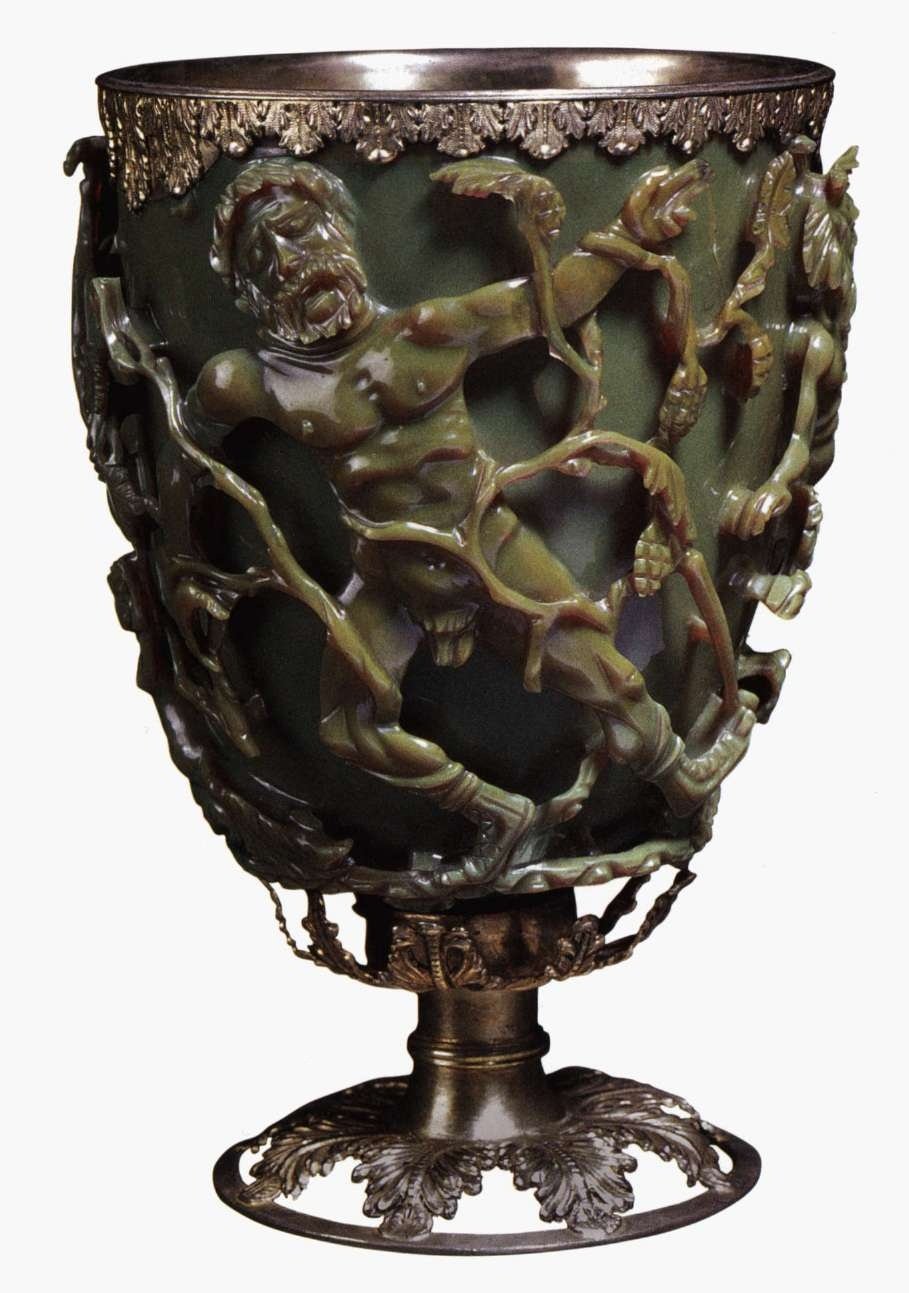MessageToEagle.com – This amazing artifact clearly shows that our ancestors were far ahead of their time. In fact they were so advanced that they may even have been inventors of what we today call nanotechnology.
Examination of the a 1,600-year-old Roman chalice at the British Museum, known as the Lycurgus Cup reveals ancient Romans were familiar nanotechnology.
The scene on the cup depicts an episode from the myth of Lycurgus, a king of the Thracians (around 800 BC).
A man of violent temper, he attacked Dionysos and one of his maenads, Ambrosia. Ambrosia called out to Mother Earth, who transformed her into a vine.
She then coiled herself about the king, and held him captive.
The cup shows this moment when Lycurgus is entrapped by the branches of the vine, while Dionysos, a Pan and a satyr torment him for his evil behavior.

It has been thought that the theme of this myth – the triumph of Dionysos over Lycurgus – might have been chosen to refer to a contemporary political event, the defeat of the emperor Licinius (reigned AD 308-24) by Constantine in AD 324.
The Lycurgus Cup exhibits a color-changing property that makes its glass take on different hues, depending on the light source. The changes of the colors have been a scientific mystery for a very long time.
In the 1990s researchers noticed tiny particles of silver and gold in the cup’s glass and it became clear the light played an important role when the cup was created by the Romans.
When hit with light, electrons belonging to the metal flecks vibrated in ways that alter the color depending on the observer’s position.
A research team is now attempting to build upon the unique technology and apply it in the medical field.
Gang Logan Liu, a University of Illinois assistant professor who studied the Lycurgus cup for several years, described it as an “icon for inspiration.”
“Were trying to build more sophisticated and higher-level structures from learning more from the Romans,” Liu said.
“Creating the same shape as the Roman cup, we can see a similar process.”
The Lucurgus Cup is kept at the British museum which means the research team cannot conduct any tests on the precious artifact.
However, they have successfully created a replica of the artifact allowing them to pursue their ideas. The replica is a color-changing cup on a much smaller scale by imprinting billions of microscopic wells on a plastic plate with the same nanoparticles.
Scientists hope the can create a sensor that could quickly diagnose a disease based on a specific biomarker. While medical tests typically have to be processed in a lab, Liu believes the nanotechnology could conceivably be used as a portable test kit of sorts, similar to a home pregnancy test.
Perhaps one of the most interesting puzzles is to learn the truth about the ancient Romans knowledge of this kind of nanotechnology.
According to the British museum this is the only only complete example of “dichroic” glass. The opaque green cup turns to a glowing translucent red when light is shone through it. The glass contains tiny amounts of colloidal gold and silver, which give it these unusual optical properties.
The cup is also the only figural example of a type of vessel known as a ‘cage-cup’. The cup was made by blowing or casting a thick glass blank.
This was then cut and ground away until the figures were left in high relief. Sections of the figures are almost standing free and connected only by ‘bridges’ to the surface of the vessel.
According to Historia Augusta”, a late Roman collection of biographies of the Roman Emperors, written in Latin, and possibly dated to the third and early fourth centuries or, two dichroic glasses were delivered as the gift from Hadrian to his brother-in-law Servianus through a record.
See also:
- The Burnt City – Mysterious Prehistoric Inhabitants Of Unknown Origin With Knowledge Of Animation Techniques
- Advanced Ancient Technology – Talos A Greek Robot Created By The God Of The Forge
- Incredible Ancient Metallurgical Wonders That Defy Explanation And Pose A Real Mystery Even Today
- Enigma Of The Ancient Magnetic “Fat Boys” And Their Curious Magnetic Properties
Possibly, this might have been one of these. Vopiscus detailed some dichroic glasses in “The Lives of Firmus, Saturninus, Proculus and Bonosus” from the “Historia Augusta”.
He refers to correspondence supposedly composed by Hadrian to his brother-in-law Servianus:
“I am giving you over some glasses, shifting colors, given to me by the priest of a temple, especially to you and my sister. I would like you to utilize them on feast-days”.
The Lycurgus cup is an amazing artifact – a proof of very advanced skills of its manufacturer.
The result of this extreme work is a high sculpture linked to the surface of the glass with thin connections. On the Lycurgus cup, these connections are grape vines along with other figural components.
Were the ancient Romans familiar with nanotechnology? If not, where did this knowledge and technological skills come from? Some believe this extraordinary artifact is far older than the ancient Greece or Rome.
If the Greek or Roman masters invented this nanotechnology, why are there no other examples of their skills?
MessageToEagle.com






